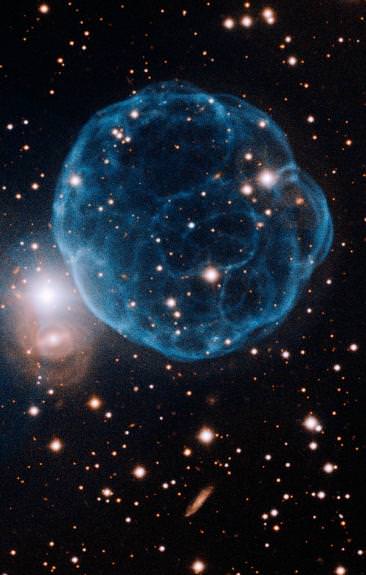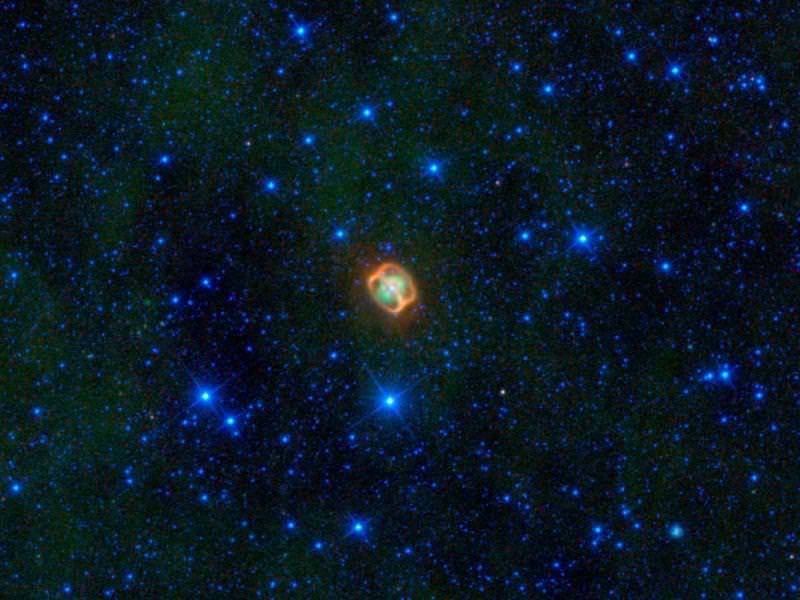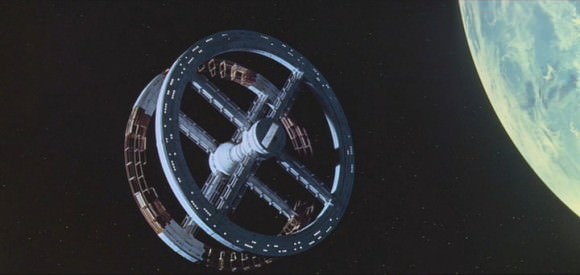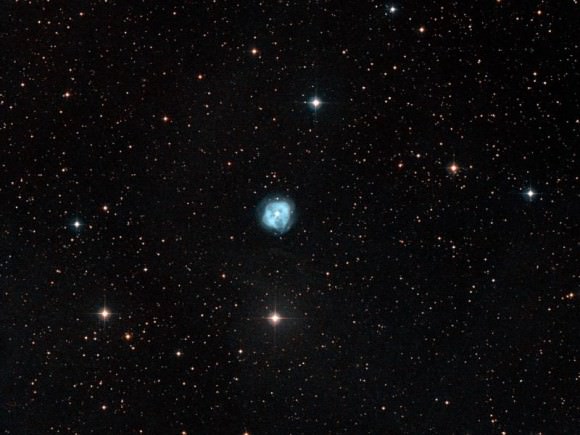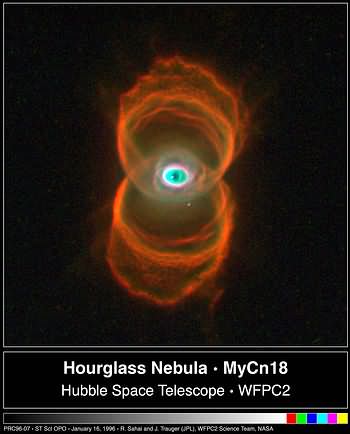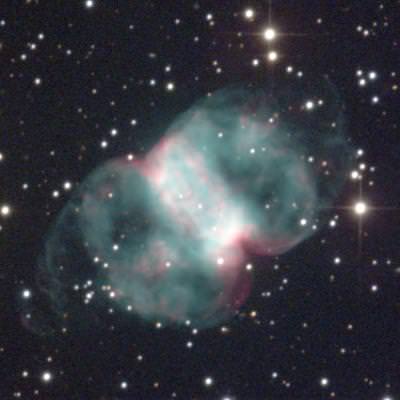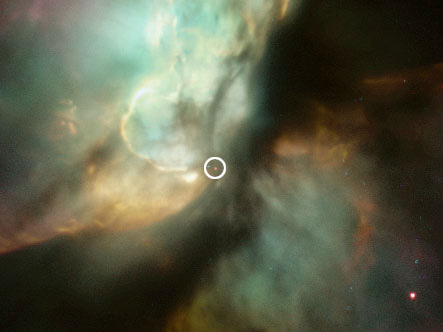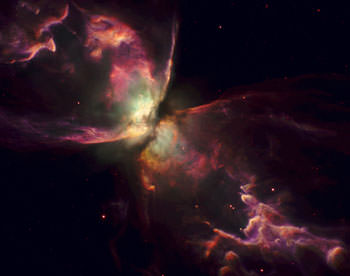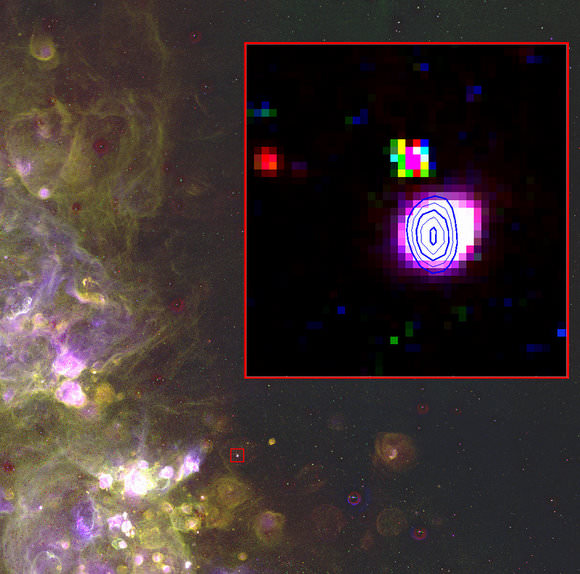[/caption]
Discovered by amateur Austrian astronomer, Matthias Kronberger, planetary nebula Kn 61 just happens to be in a relatively small piece of celestial real estate being monitored by NASA’s Kepler planet finding mission. Lucky for us, we’re able to take a look at the photographic results of the new nebula obtained with the Gemini Observatory.
“Kn 61 is among a rather small collection of planetary nebulae that are strategically placed within Kepler’s gaze,” said Orsola De Marco of Macquarie University in Sydney, Australia who is the author of a 2009 paper speculating on how companion stars or even planets may influence and shape the intricate structure seen in many planetary nebulae. “Explaining the puffs left behind when medium sized stars like our Sun expel their last-breaths is a source of heated debate among astronomers, especially the part that companions might play,” says De Marco, “it literally keeps us up at night!”
And visions like this keeps the Kepler Mission continually monitoring a 105 square degree area of sky located in Cygnus looking for changes in stellar brightness which could spell a planetary transit, companion star – or something else. “It is a gamble that possible companions, or even planets, can be found due to these usually small light variations,” says George Jacoby of the Giant Magellan Telescope Organization and the Carnegie Observatories (Pasadena). “However, with enough objects it becomes statistically very likely that we will uncover several where the geometries are favorable – we are playing an odds game and it isn’t yet known if Kn 61 will prove to have a companion.” Jacoby also serves as the Principal Investigator for a program to obtain follow-up observations of Kn 61’s central star with Kepler.
To help sift through the huge amount of data provided by Kepler, professional and amateur astronomers are working as partners to help locate objects such as planetary nebula. So far, six have been found in the digital sky survey – including Kn 61. “Without this close collaboration with amateurs, this discovery would probably not have been made before the end of the Kepler mission. Professionals, using precious telescope time, aren’t as flexible as amateurs who did this using existing data and in their spare time. This was a fantastic pro-am collaboration of discovery,” says Jacoby, who serves as the liaison with the Deep Sky Hunters (DSH) and requested their help to survey the Kepler field. Jacoby published a paper with DSH members in 2010 that describes the techniques used.
“Planetary nebulae present a profound mystery,” says De Marco. “Some recent theories suggest that planetary nebulae form only in close binary or even planetary systems – on the other hand, the conventional textbook explanation is that most stars, even solo stars like our sun, will meet this fate. That might just be too simple.” Jacoby also elucidates that terrestrial observations are unable to detect such phenomena with a high rate of regularity “This is quite likely due to our inability to detect these binaries from the ground and if so then Kepler is likely to push the debate strongly in one direction or the other.”
As for our own galaxy, over 3,000 planetary nebulae have been identified and cataloged. We know they are the end product of a dying star, but not what role companions stars (or even planets) may take in their structure. Of these, only 20% have binary central stars – but this low number may be our inability to resolve them. Hopefully the space-based Kepler telescope can one day reveal their mysteries us!
Original News Source: Gemini Observatory Image Release.

